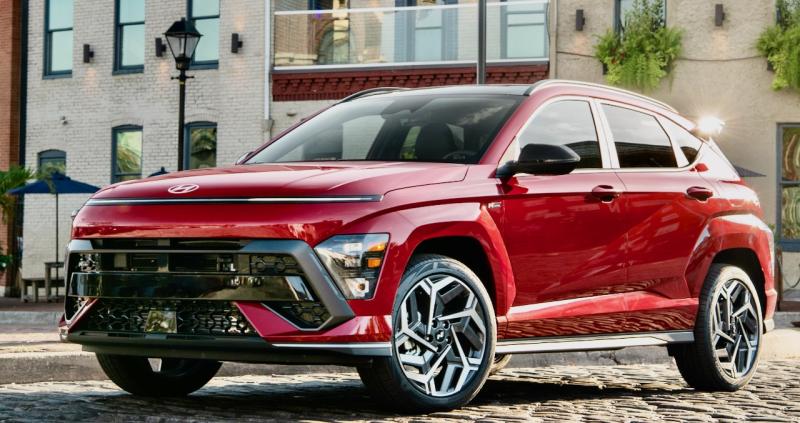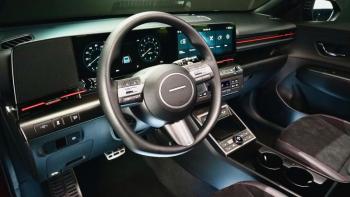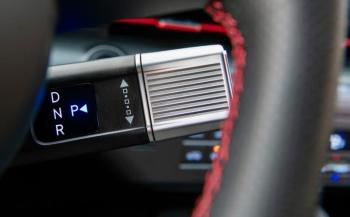Hyundai Kona N Line AWD
The Kona is Hyundai’s not-quite-entry-level SUV; with a listed starting price of $25,585 (including freight & handling), it edges out the little Venue by more than four grand. This puts the Kona in the thick of the subcompact-SUV feeding frenzy, where it faces stiff competition from, well, just about everyone else.
By and large, it acquits itself well, especially at the lower end of its price range. Our Kona, on the other hand, is an N Line version optioned up to $33,695; at that relatively lofty price it’s more show than go, even with the uprated engine. Both available engines are small—1.6-litre gas-burning Fours—and the turbo churns out only 43 more ponies and 63 more pound-feet of torque than the base motor.
However, the turbo drivetrain also includes a new 8-speed automatic transmission to help it makes the most of this power, and the driver can participate by manually selecting gears with the shift paddles on the steering wheel. (The 147HP base motor comes with a continuously variable automatic transmission.)
On the bright side, even with all-wheel drive (another option), we’ve been averaging nearly 30 miles per gallon in mostly highway driving. Pleasant miles, at that—for a subcompact, the new Kona feels collected and competent at speed. Just don’t expect the gravitas of the much larger, heavier, more luxurious and expensive Palisade, Hyundai’s top-end three-row sport-ute.
The N Line cabin is attractive and comfortable, with heated front seats, a wireless phone charging pad, and a large touchscreen that offers onboard navigation in addition to smartphone-linked Apple CarPlay and Android Auto. Digitally and electronically, the Kona is now leading-edge. With a bit of clicking and linking plus NFC (near-field communication), a smartphone and even a smart watch can replace the ignition keyfob for up to three drivers. The Kona now offers OTA, too—wireless over-the-air software updates to sharpen its control systems and refresh its maps and other media.
The Kona is also well equipped with the latest active driver assistance features, called SmartSense, which eyeball the surrounding traffic and intervene as necessary. They also help the vehicle stay centered in its lane even through modestly radiused bends. Note that, as in the Palisade, SmartSense can be shut down completely, for that old-fashioned hands-on, attention-paying mode of driving.
Other big news with the re-designed Kona is that it is in fact bigger—5.7 inches longer and an inch wider than before, for more room and a reclinable rear seat, and its wheelbase has been stretched by 2.3 inches, which should improve its ride. With these dimensions and its edgy new sheet metal plus the N Line’s rear wing, the Kona now asks to be taken more seriously. And we do.
Hyundai would scold me if I failed to mention the really big news about the Kona: In addition to the three internal-combustion models, a battery-electric version is now available with about 260 miles of range and 400-volt fast-charging capability. Hyundai expects to have 11 EVs in production by 2030; I expect that the current cooling-off in EV sales will have a dampening effect of prices that will spur sales on again.
Opinionated at any Speed will return in late April.
























